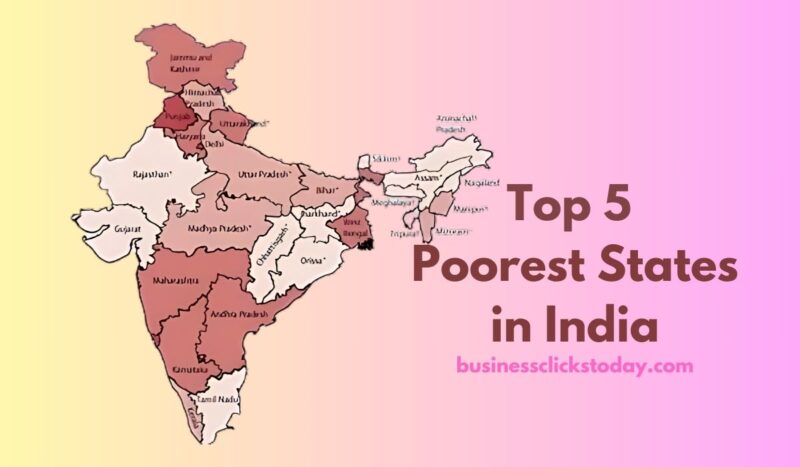In 2024, India continues its journey to becoming an economic powerhouse. However, this progress is not uniform, and some regions remain significantly behind. The focus here is on the poorest states in India, where prosperity remains elusive and targeted intervention is crucial. Addressing the central issues in these states—such as high poverty levels, outdated economic systems, and challenges of modernization—is essential. This article aims to highlight not just the disparities but to foster a discussion on bridging these gaps so that every part of this diverse and vibrant country benefits from progress.
Top 5 Poorest States In India
1. Bihar

Bihar stands as one of the poorest states in India, with 51.91% of its population living in multidimensional poverty, as indicated by a Multidimensional Poverty Index (MPI) greater than or equal to 0.5. The severe poverty in Bihar is rooted in deep-seated institutional problems, widespread illiteracy, and ineffective agricultural practices. These systemic issues present significant barriers to development and change. Addressing these foundational problems is crucial for fostering sustainable development and improving the quality of life for Bihar’s residents.
2. Jharkhand

Jharkhand is the second poorest state in India, with an MPI of 42.16%. Persistent poverty in Jharkhand is marked by low literacy rates, poor education enrollment, high child mortality, and inadequate nutrition among children. Since its separation from Bihar in 2000, the state has continued to face educational and health challenges that exacerbate its poverty levels. Focused interventions in education and health, along with other areas that can improve living conditions, are necessary to alleviate poverty in Jharkhand.
3. Uttar Pradesh

With an MPI of 37.79%, Uttar Pradesh is the third poorest state in India, following Jharkhand. This high MPI indicates that a large portion of the population experiences multidimensional poverty, affecting health, education, and living standards. Although there have been improvements in recent years—such as better sanitation, nutrition, and access to basic services—many residents of Uttar Pradesh still face significant challenges. Continued efforts are required to further reduce poverty and improve living conditions in the state.
4. Madhya Pradesh

Madhya Pradesh, with an MPI of 36.65%, has a significant tribal population that faces severe poverty compared to other groups within the state. The rural poor, especially tribal communities, rely heavily on forest resources, highlighting the need for sustainable development strategies. Policies should focus on addressing the specific needs of these communities by improving access to essential services and economic opportunities, thereby contributing to poverty reduction in the region.
5. Meghalaya

Meghalaya, with an MPI of 32.67%, ranks as the fifth poorest state in India. Major challenges include extreme malnutrition, inadequate healthcare facilities, and insufficient educational resources. A significant portion of the population also lacks basic necessities such as clean cooking fuel and electricity. Addressing these multidimensional aspects of poverty through comprehensive efforts to enhance health, education, and living conditions is vital for improving the standard of living in Meghalaya.
Conclusion
In 2024, India continues to grapple with significant economic disparities, with certain states lagging far behind. Bihar, Jharkhand, Uttar Pradesh, Madhya Pradesh, and Meghalaya are among the poorest states in India, reflecting the urgent need for targeted interventions and sustained efforts to uplift marginalized communities. Achieving inclusive growth and equitable development across these regions is crucial for driving India’s overall prosperity forward.
















